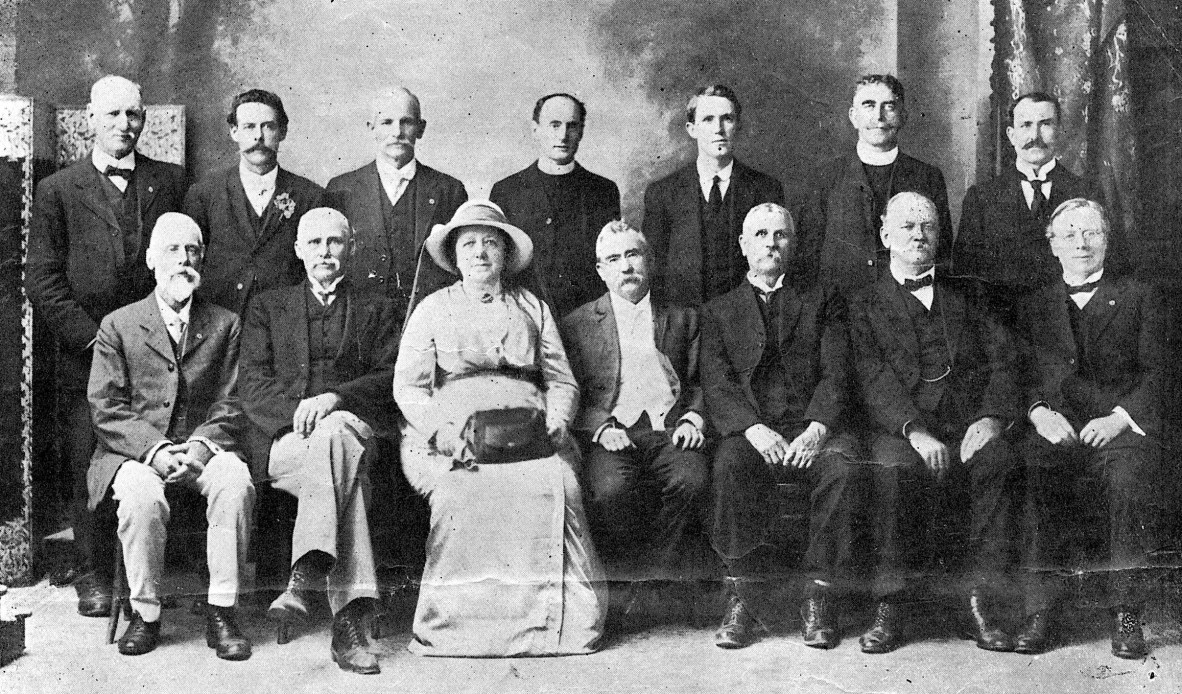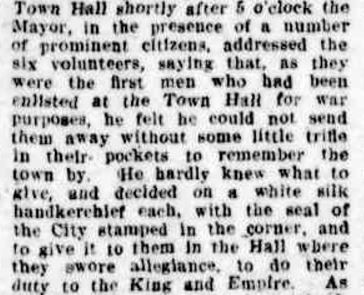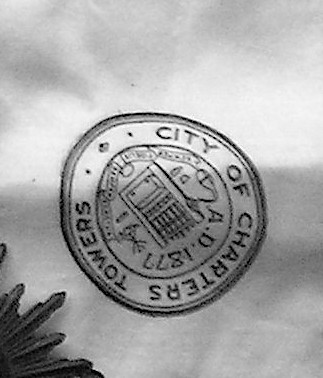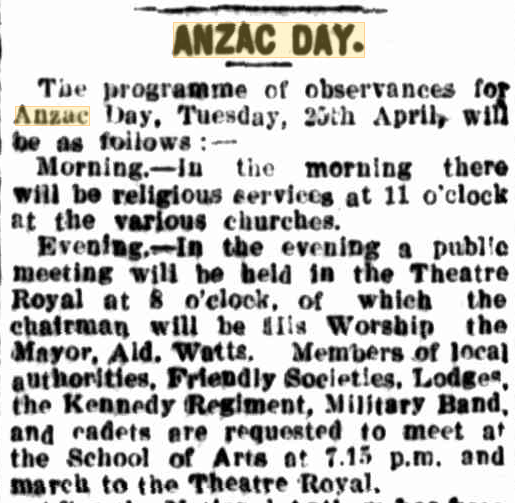Guest blogger: Michael Brumby, Community Historian, Charters Towers Archives Group

What were places such as Charters Towers like during the First World War? How did Charters Towers respond to the call of war? Through my research, using numerous newspaper accounts and personal collections I have uncovered many of the stories of what was going on in Charters Towers during this period. Much of the war is revealed though soldiers letters and accounts of deaths and heroism marking the major battles and losses and victories. The people of Charters Towers learnt about the war through personal correspondence that was printed in the city’s two newspapers: the Evening Telegraph and The Northern Miner.

On the home front, Charters Towers re-formed a Patriotic Committee, started a branch of the Red Cross and agreed the town hall would become the enlistment centre with the mayor working as the district’s first enlistment officer. The first war time mayor, Fred Johnson ensured that all Charters Towers men would receive one of the city’s silk handkerchiefs, acknowledging they would not be forgotten.

In October 1914 Mayor Fred Johnson was asked to open a recruiting office in the Town Hall, Gill Street and thus on 26 October 1914, Charles Edward Rowe, William Raby, Edward Reynolds, Walter Reynolds, Albert Bunney and Thomas Stremes were examined for service. These first recruits from Charters Towers swore allegiance in the presence of the Mayor as outlined in the newspaper article published in the Northern Miner on Tuesday 27 October 1914.
At the Town Hall shortly after 6 o'clock the Mayor, in the presence of a number of prominent citizens, addressed the volunteers, saying that, as they were the first men who had been enlisted at the Town Hall for war purposes, he felt he could not send them away without some little trifle in their pockets to remember the town by. He hardly knew what to give, and decided on a white silk handkerchief, each with the seal of the City stamped in the corner, and to give it to them in the Hall where they swore allegiance to do their duty to the King and Empire. Source: Northern Miner Tuesday 27 October 1914, p3

The Anzac Commemoration Committee convened in Brisbane January 2016 to set in motion the means to celebrate the first anniversary of the landing at Gallipoli. The day was planned to commemorate the fallen heroes, remember the wounded and recognise the courage of those fighting for the cause. On 25 April 1915, religious services were held and at night a public meeting was held with a minute silence at 9.00pm to honour the fallen heroes. Relatives of those who died at Gallipoli and those who enlisted were given a place of honour at the meeting. In Charters Towers, the Kennedy regiment, military band and the cadets and members of the local authorities, Friendly Societies and Lodges marched from the School of Arts in Mosman Street at 7.15pm to the Theatre Royal where a public meeting commenced at 8.00 pm. Among the various speeches that were presented to the assembled, Councillor R Millet, chairman of the Queenton Shire Council read the resolution issued by the Queensland Executive of the Anzac Day Commemoration proposing unswerving loyalty of the people of Queensland. On 24 April 1916, The Northern Miner newspaper published the "ANZAC DAY" program to be observed on Tuesday 25th April.

Source: The Northern Miner 24 April 1916, p2
The newspaper reports of the day makes for a broader narrative of the men and women of Charters Towers, which was affectionately known as The World by the locals.
In “The World” and the Great World War: Charters Towers 1914 -1919 (published by Charters Towers Archives) we uncover how the community of Charter Towers in North Queensland responded to the call of war. It commenced with the mobilisation of the first Australian troops from Charters Towers on 4th August and concluded with the last of the Welcome Home receptions held at the School of Arts on 25th March 1920.
Photograph credits:
- Anzac Gathering, Lissner Park, 25 April 1920 - Don Peiniger, photographer - Charters Towers Archives - 2008162.3278
- Charters Towers Patriotic Committee, 1915 - photographer unknown - Charters Towers Archives - 2008163.3145/1 - Reproduced from Souvenir Australia Day, August 28th 1915 (The committee comprised the following: Mayor Fred Johnson; Councillors J Millican, AH Pritchard Jas Carroll; Hon EHT Plant; Canon Saxon; Rev G Tullock; Rev AG Smith; Rev Hubert Robertson; Father E O’Keefe; B Toll; J TIlley; JW Ward; WJ Carroll; WJ Wellington; JC Linedale; A Irwin; T Webb; P Kerr; WJ Park; Mrs Plant; Mrs Fred Johnson and Mrs J Millican)
- The Northern Miner Tuesday 27 October 1914, p3 - Trove newspapers online, National Library of Australia
- Detail from: Major Henry Grant’s equipment resting on a Charters Towers silk handkerchief - Dudley Nott , photographer - Charters Towers Archives - World Connections - WC 2016.3362 - Dudley and Jan Nott Collection - with permission from Janet Grant Nott
- The Northern Miner 24 April 1916, p2 - Trove newspapers online, National Library of Australia
For more information email Charter Towers Archives to access relevant publications.
Comments
Your email address will not be published.
We welcome relevant, respectful comments.